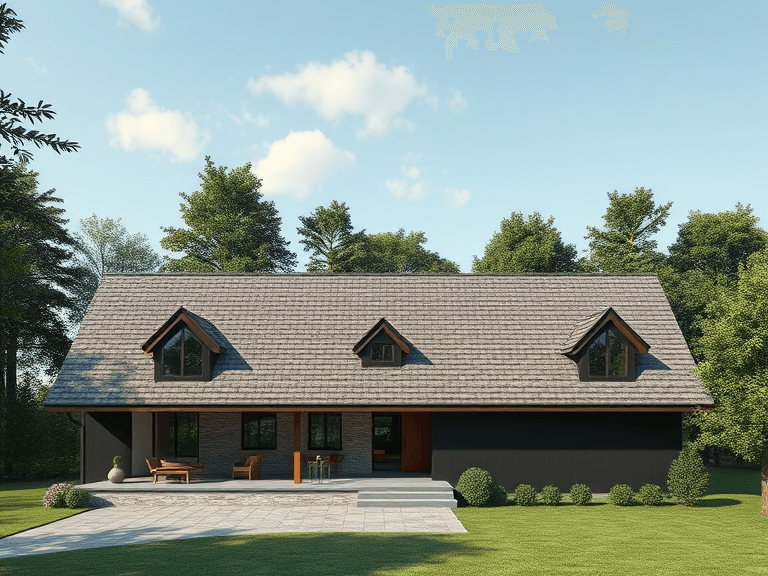
Roof shingles are an essential component of roofing systems, serving both functional and aesthetic purposes. They are designed to protect buildings from environmental elements such as rain, snow, wind, and ultraviolet rays. The primary role of shingles is to form a waterproof barrier, preventing water penetration that can lead to significant structural damage. Additionally, roof shingles contribute to the overall appearance of a property, affecting its curb appeal and market value.
There are various types of shingles available in the market, each constructed from different materials that influence their performance, durability, and cost. The most common types include asphalt shingles, wood shingles, metal shingles, and tile shingles. Asphalt shingles, known for their affordability and ease of installation, dominate the roofing material market. Wood shingles offer a natural appearance but may require more maintenance. Metal shingles are praised for their longevity and resistance to extreme weather, while tile shingles, often found in Mediterranean-style architecture, provide a unique aesthetic but tend to be heavier and more expensive.
The materials used in the production of roof shingles significantly affect their properties, such as lifespan, heat retention, and energy efficiency. For example, asphalt shingles are primarily made of fiberglass or organic materials coated with asphalt, whereas metal shingles can be crafted from steel, aluminum, or copper. Each material offers unique benefits and drawbacks, making it crucial for homeowners to understand what are roof shingles made of when selecting the appropriate type for their roofing needs.
This understanding not only aids in making informed choices but also underpins the importance of regular maintenance and timely replacement. As we delve deeper into the specific materials used in roof shingles, we will uncover how these contribute to the overall effectiveness and longevity of roofing systems.
Different Types of Shingle Materials
Roof shingles come in various materials, each offering distinct characteristics that contribute to their overall performance and aesthetic appeal. Understanding these materials is essential for homeowners considering new roofing solutions. One of the most prevalent materials is asphalt, known for its affordability and ease of installation. Asphalt shingles are composed of fiberglass or organic materials, coated with asphalt and granules, providing sufficient weather resistance while being lightweight. However, they typically have a shorter lifespan compared to other options, often lasting 15 to 30 years.
Wood shingles are another classic choice, often crafted from cedar, redwood, or pine. Their natural beauty enhances the appearance of a home, offering excellent insulation properties. Nevertheless, wood shingles require regular maintenance to prevent issues related to rot, insects, and fire. Homeowners should factor in these requirements when choosing this option.
Metal roofing is gaining popularity due to its durability and recyclability. Made from materials such as aluminum, steel, or copper, metal shingles can withstand harsh weather and are resistant to rot and insect damage. Their lifespan often exceeds 50 years, though they may entail higher initial costs. Additionally, the potential for noise during rain or hail should be considered.
Slate shingles present an elegant, natural option that is both durable and fire-resistant. While they can last over a century, slate is heavy and often requires reinforced roof structures, which can escalate installation costs. Finally, tile shingles, typically made from clay or concrete, offer a distinctive look while being highly durable against elemental wear. Despite their lengthy lifespan, tiles can be prone to cracking if heavy impacts occur.
Each material has its own benefits and drawbacks, meaning homeowners must carefully evaluate their options when deciding what are roof shingles made of. By weighing factors such as durability, cost, and aesthetic appeal, one can select the most suitable roofing material for their needs.

Manufacturing Process of Roof Shingles
The manufacturing process of roof shingles is a complex and intricate procedure that involves a variety of materials and techniques. Different types of shingles, such as asphalt, wood, and metal, each require unique sourcing and processing steps. Understanding how these materials are transformed into roof shingles provides insight into their performance and longevity.
For asphalt shingles, one of the most common types, the process begins with the selection of high-quality asphalt, which is derived from petroleum products. The asphalt is blended with additives to enhance its waterproofing and durability. Next, fiberglass or organic felt is used as the base for the shingles. This felt is coated with the asphalt mixture, creating a flexible and resistant surface. After the base layer is prepared, granules made from natural minerals are embedded in the asphalt to provide UV protection and aesthetic appeal. The granules not only offer color but also improve the shingles’ overall durability against weather elements.
Wood shakes, on the other hand, are manufactured from hardwoods such as cedar and redwood. The manufacturing process involves cutting logs into shakes, which are then dried to minimize moisture content. This drying process helps prevent warping and ensures that the wood retains its integrity over time. After drying, the shakes are treated with preservatives to enhance their resistance to rot, decay, and insect damage, making them suitable for various climates.
Recent technological advancements in the production of roof shingles have introduced processes such as automated cutting and energy-efficient manufacturing methods. These innovations not only increase production efficiency but also enhance the consistency and quality of the shingles produced. As a result, consumers benefit from a wider selection of shingles that are not only more durable but also environmentally friendly, aligning with the growing demand for sustainable building materials.
Choosing the Right Shingle Material for Your Roof
When it comes to selecting the right roof shingles, understanding what roof shingles are made of plays a crucial role in making an informed choice. Various materials are available on the market, each with its distinct advantages and characteristics tailored for specific roofing needs. Homeowners must consider several factors, including climate, aesthetic preferences, budget constraints, and the longevity of different shingle materials, before finalizing their selection.
The first consideration is climate, as certain shingle materials perform better in specific environments. For instance, asphalt shingles are favored in a wide range of climates for their durability and cost-effectiveness. However, in regions susceptible to extreme weather conditions, such as hurricanes or heavy snowfall, metal roofing or slate may be more appropriate due to their resilience and longer life span. In contrast, wood shingles can add a natural aesthetic but may be less suitable for humid areas prone to mold and decay.
Aesthetic preferences also play a key role in selecting roof shingles. Homeowners may opt for materials that complement the architectural style of their residence. For example, traditional asphalt shingles offer a classic look, while other materials, such as clay tiles or metal shingles, can provide a modern or rustic appeal. The color and texture of shingles can also significantly impact the overall appearance of a home, allowing homeowners to creatively express their style.
Budget constraints are another critical factor; while some materials like asphalt offer lower initial costs, they may require more frequent replacements compared to premium options like stone-coated steel or slate, which can be more expensive upfront but offer increased longevity. Understanding the lifecycle costs associated with each material is essential for informed budgeting.
Finally, consulting roofing professionals can provide valuable insights, especially for those unsure of what roof shingles are made of or which types would best suit their needs. They can offer recommendations based on personal circumstances and local climate conditions, ensuring homeowners make a choice that balances aesthetics, durability, and cost-effectiveness.


